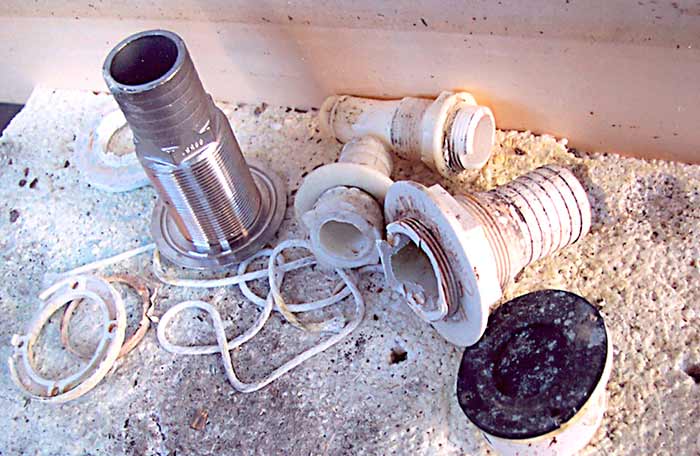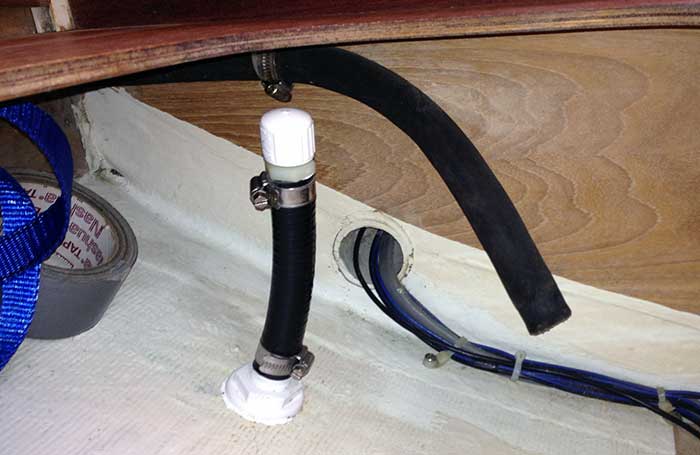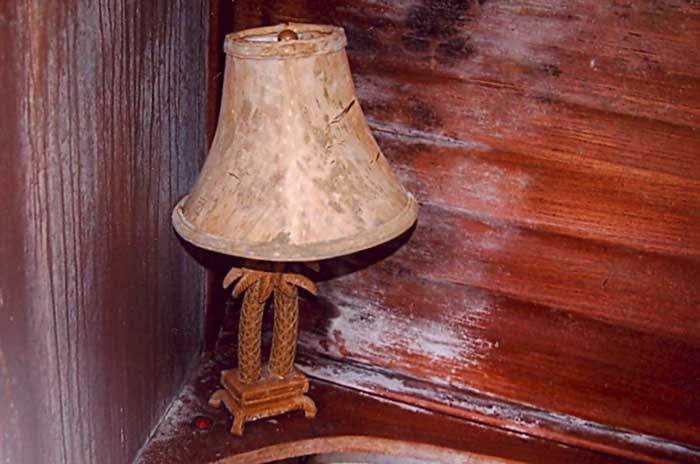Advertisement
Cheap automotive battery chargers and fires, thru-hull failures, avoiding mold and mildew and more ...

Photo: Mark Corke
Cheap Automotive Battery Chargers And Fires
As we approach the coldest months of the year, many of us in cold-climate areas have already put the boat to bed for winter, but there may be some who have put it off. There's still time. And even if you have winterized the water system and engine, don't forget that the batteries need some caretaking to ensure they will be in good shape come spring — and that means periodic charging.
Unfortunately, the owner of this boat thought he would save himself the trouble of removing the batteries from the boat and, instead, leave them permanently connected to a battery charger. The battery charger that he chose, however, was a cheap automotive type not recommended for long-term use. The net result was that the batteries got too hot, overheated, and started a fire, destroying the boat.
Sadly, BoatUS Marine Insurance gets claims like this every year, and in most cases, they could have been avoided by either removing the batteries from the boat and storing them ashore where they can be monitored appropriately, or if they can't be easily removed, stay connected to a proper marine battery charger designed for long-term use.
Thru-Hull Fail #1
We know from our insurance claims files that boats sink at the dock three times more often than they do out on the water. We also know the most common causes of dock sinkings are wear and tear, and corrosion — and nearly all are preventable.

In this case, the boat sank because a cheap plastic thru-hull failed. Weakened by sunlight exposure, the sink drain mounted just above the waterline failed when the boat bumped the dock. The outside flange was destroyed, and this allowed the fitting, still connected to the sink drain, to fall inside the boat leaving a 2-inch-diameter hole above the waterline. With each passing wave, water entered the boat, slowly filling the bilge, which caused the boat to sit lower and lower in the water. Eventually, the hole became level with the waterline and water flooded in, sinking the boat.
The off-season is an excellent time to check all thru-hulls. Those below the waterline should be constructed from bronze or Marelon, while those above the normal waterline of the boat may also be stainless steel if a bright finish is desired. Stainless steel is unsuitable for use below the waterline.
Thru-Hull Fail #2
The owner of this boat (see below) installed a thru-hull for a new piece of equipment, in this case a water maker, and simply added a length of hose with a cheap plastic cap in the end. Worse, the thru-hull became permanent when the owner decided not to install the equipment after all.

Photo: Mark Corke
All hull penetrations below the waterline must be installed with a seacock, and this is written into ABYC standards:
H 27.5.1 "All piping, tubing or hose lines penetrating the hull below the maximum heeled waterline, shall be equipped with a seacock to stop the admission of water in the event of failure of pipes, tubing or hose."
Clearly, if this hose was knocked off or damaged by someone throwing some gear into the locker, there would be no way to shut off the flow of seawater coming into the boat, and it would likely sink. The other red flag noted by the surveyor is that the thru-hull is made of cheap plastic intended as a sink drain for use above the normal waterline and is not meant for the application chosen by the owner. ABYC guidelines also state that any thru-hull must be capable of withstanding a sustained pull of 500 pounds for 30 seconds applied to the inboard end of the fitting farthest away from the inside of the hull. In other words there should be no chance of a skin fitting failing if someone inadvertently steps on it — a test that this fitting would likely fail. Finally, it should be noted that the any hull penetration should have a suitable backing plate, something that is also lacking here.
Don't Be A Stranger To Your Boat
This owner thought he'd done everything he could to look after his boat during the winter. He got the yard to shrinkwrap it in the fall and left it at that, assuming all would be well until spring.

Sadly, he left water in the bilge of the boat. While it didn't freeze, it did cause extensive damage in another way: As the boat warmed up on sunny days, the water in the bilge caused moisture in the air to rise to a level that prompted the growth of black mold. By the time the boat was opened up in the spring, mold covered almost every surface, destroying any soft furnishings left aboard, which required replacement. Eradicating the mold from the remainder of the boat was a very time-consuming and costly exercise that easily could have been avoided had the problem been noted earlier.
Mold is not covered under most marine insurance policies. Make sure to visit your boat regularly, even when you aren't using it, and address any issues that you spot without delay. It could save you plenty in the long run.
